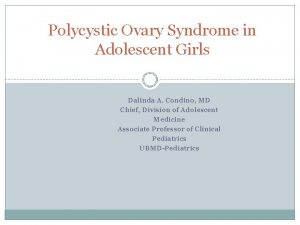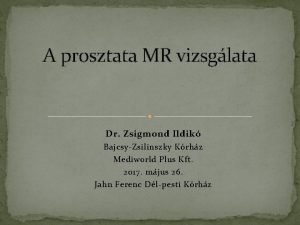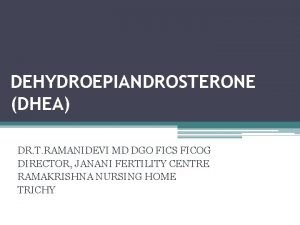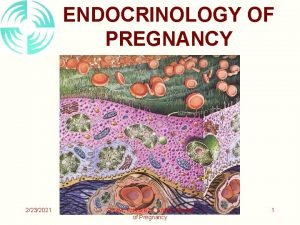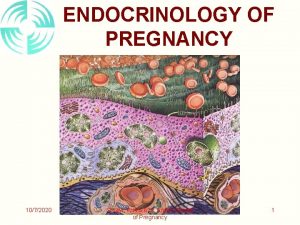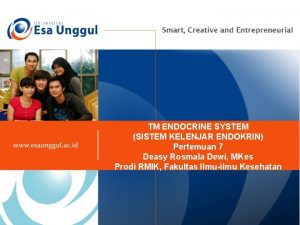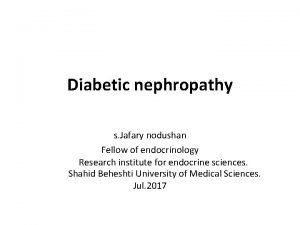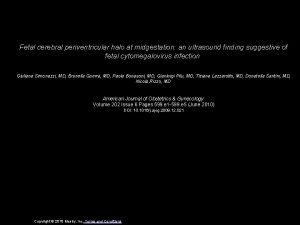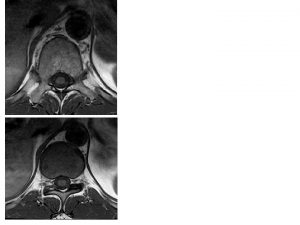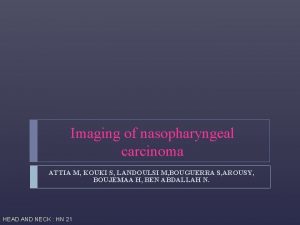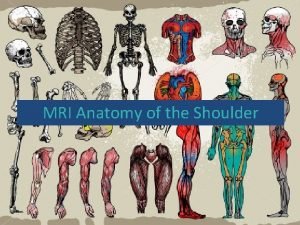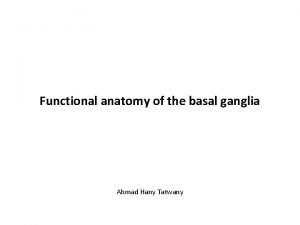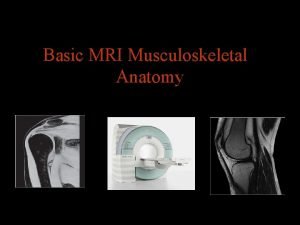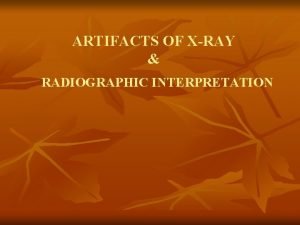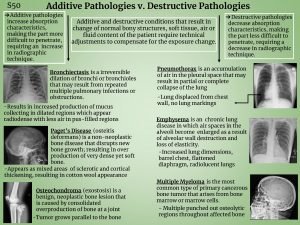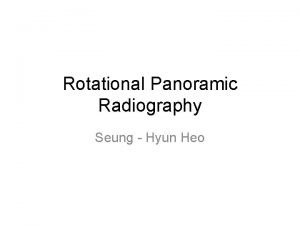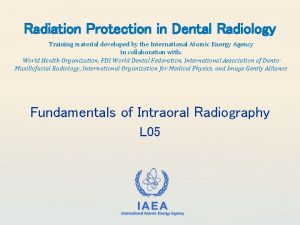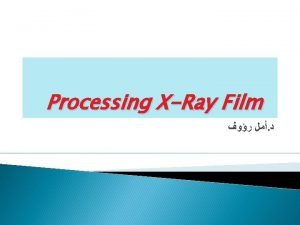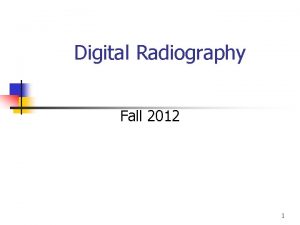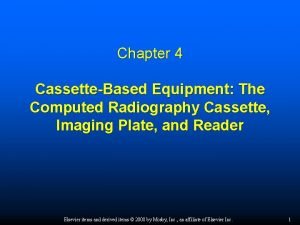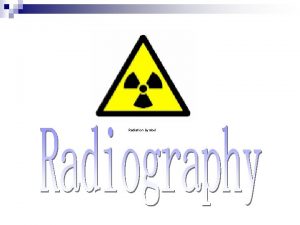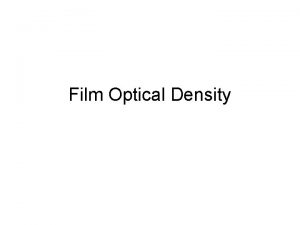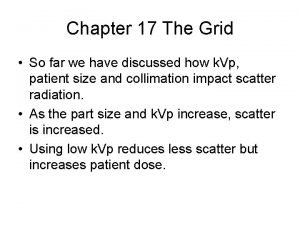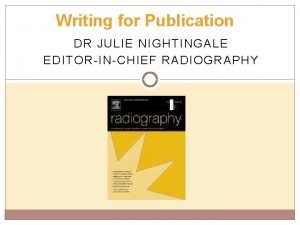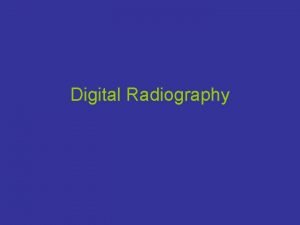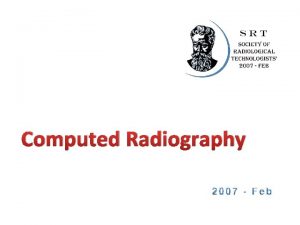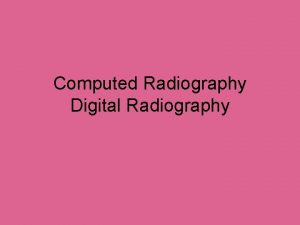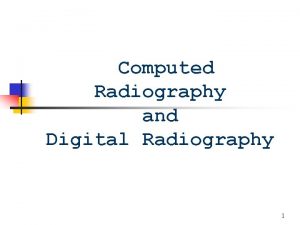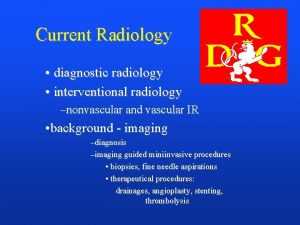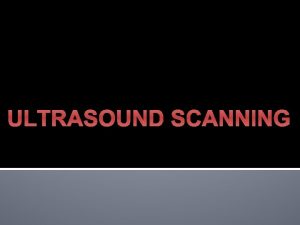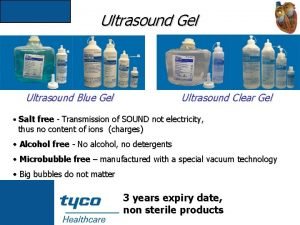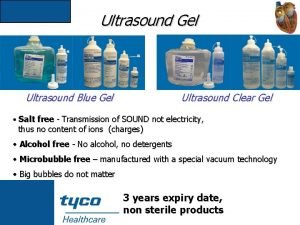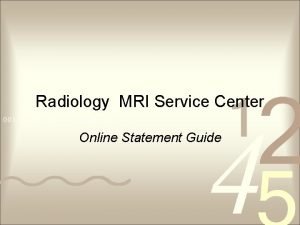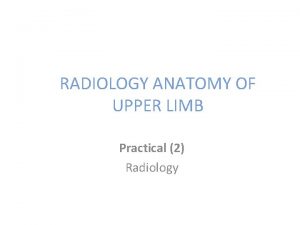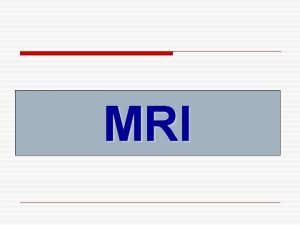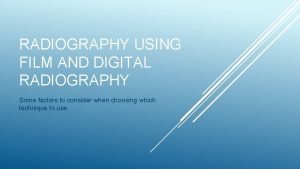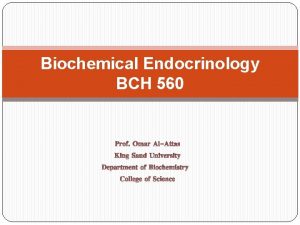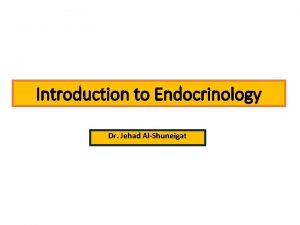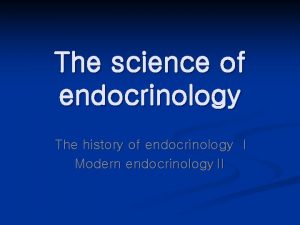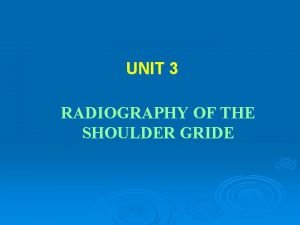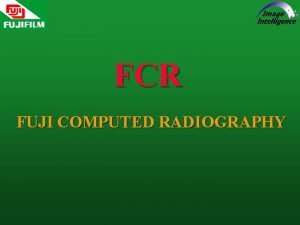Radiology and Endocrinology ANATOMY Radiography Ultrasound CT MRI

































- Slides: 33

Radiology and Endocrinology ANATOMY • Radiography • Ultrasound • CT • MRI FUNCTION • Radionuclide Imaging - Scintigraphy - PET

Radionuclide Imaging • Images metabolic pathways • Pharmaceutical which mimics a component of a normal metabolic pathway is administered to the patient • Pharmaceutical radiolabelled so that its distribution in the patient can be visualised with a gamma camera

Ideal Radionuclide • emits gamma radiation at suitable energy for detection with a gamma camera (60 - 400 kev, ideal 150 kev) • should not emit alpha or beta radiation • half life similar to length of test • cheap • readily available

Ideal radiopharmaceutical • cheap and readily available • radionuclide easily incorporated without altering biological behaviour • radiopharmaceutical easy to prepare • localises only in organ of interest • t 1/2 of elimination from body similar to duration of test

Thyroid - radiography • Little role • Thyroid mass diagnosed incidentally on chest radiograph • Thoracic inlet views may demonstrate tracheal compression

Thyroid - ultrasound • High resolution (5 - 10 MHz) • Confirms - mass is thyroid cystic or solid single or multiple • cannot distinguish solid carcinoma from solid dominant nodule • Not useful in hyperthyroidism

Thyroid - CT/MRI • Not as good as US at resolving lesions within the thyroid • Best tests for assessing mediastinal disease • CT better than MRI for calcification • MRI better than CT for distinguishing between fibrosis and residual tumour

Thyroid - scintigraphy 99 m PERTECHNETATE Trapped but not organified Competes with iodide for uptake Cheap and readily available IODINE (123 I or 131 I) Trapped and organified Better for retrosternal goitres Expensive, cyclotron generated RECENT (10 days) IODINE CONTRAST BLOCKS UPTAKE

Thyroid scintigraphy 99 m Tc 123 Na. I ADMIN iv po/iv PATIENT PREP withdraw thyroid Rx avoid high Iodine foods IMAGING 15 min pi 1 -2 hr pi 24 hr po

Hyperthyroidism RN uptake 1. Thyroid gland (>95%) Toxic nodular goitre Diffuse toxic goitre (Graves) Thyroiditis 2. Exogenous T 3/4/iodine Iatrogenic Iodine - induced (XRay contrast, amiodarone)

Thyroid nodules Risk of malignancy Overall 10% US - cystic 0. 3 - 10% US - solid ? ? RNI - cold 16% RNI - hot 4% First line investigation: Cytology +/- US

RNI in thyroid disease • Investigation of hyperthyroidism • Location of ectopic thyroid tissue (congenital hypothyroidism, retrosternal goitre) • Little role in thyroid nodules

ry 1 Hyperparathyroidism Adenomas Hyperplasia Carcinoma Type % Single Chief cell Clear cell 80 15 1 4

RN parathyroid imaging 99 m. Tc / 201 Tl subtraction scans 99 m. Tc-MIBI early/late scans False positives: thyroid pathology False negatives: parathyroid hyperplasia Both good for ectopic parathyroids

Parathyroid imaging • US not good at finding ectopic glands • CT Contrast Surgical artifacts • MRI Good for localisation and ectopic glands

Imaging parathyroids Uncomplicated 1 ry hyperparathyroidsim 90 -95% surgical success rate without imaging Recurrent/persistent hyperparathyroidism surgical success rate without imaging -50% with imaging - 90% (combined RNI + MRI)

Adrenal glands Cortex aldosterone cortisol adrenal androgens Medulla adrenalin

Adrenal glands • AXR - may show calcification • US - large masses only (unless neonatal) • CT - can detect small lesions - cannot distinguish metastases from non-functioning adenomas • MRI - small lesions - may distinguish mets from non-functioning adenomas

Adrenal cortical RNI • Radiolabelled cholesterol esters (75 Seleno-methylnorcholesterol, 131 I - 6 B iodomethyl-19 -norcholesterol) • Image at 4 and 7 days • > 50% difference in activity between sides is abnormal

RNI in Cushings syndrome ACTH-dependent CS pituitary/ectopic ACTH -independent CS bilat nodular hyperplasia adrenocortical adenoma bilat Adrenocortical carcinoma bilat uni

Cushings syndrome Diagnosis - biochemistry Localisation - CT/MRI for 1. Pituitary ACTH-dependent 2. Ectopic ACTH-dependant 3. ACTH - independant RNI not usually necessary

RNI and Cushings syndrome Used for 1. Finding residual functioning adrenal remnants if recurrent disease after prior bilateral adrenalectomy 2. Somatostatin receptor scanning for ectopic ACTH from small bronchial carcinoid tumours

Primary aldosteronism • small tumours may not be seen with CT/MRI • RNI + dexamethasone suppression can find tumours < 1 cm • Adrenal visualisation before 5 days is abnormal (bilateral/unilateral)

Adrenal medullary RNI Phaeochromocytoma Paraganglioma Neuroblastoma Ganglioneuroma

Adrenal medullary RNI • Metaiodobenzylguanidine (MIBG) - localises in catecholamine storage vesicles of adrenergic nerve endings - 123 I or 131 I • somatostatin receptor imaging 111 In octreotide

MIBG • • phaeochromocytomas (95% sensitivity) neuroblastoma (80 - 90% sens) carcinoid medullary thyroid carcinoma (MEN syndromes)

Phaeochromocytomas 10% malignant bilateral extra- adrenal paediatric

Phaeochromocytomas Diagnosis - biochemistry Localisation CT if > 2 cm RNI to exclude - small tumours - bilateral adrenal - multifocal - metastases

‘Incidentalomas’ Incidental adrenal mass in patients undergoing abdominal imaging (2%) Q. Is it functioning? Is it benign or malignant?

Functioning ‘incidentalomas’ Diagnosis Clinical features Biochmistry Confirmation RNI

Non-functioning adenoma vs. metastasis • CT using attenuation values • MRI - chemical shift imaging

Radiology and Endocrinology Localisation not Diagnosis

IMAGING and the ENDOCRINE SYSTEM
 Pcos ultrasound image
Pcos ultrasound image Hypointenz
Hypointenz Reproductive biology and endocrinology
Reproductive biology and endocrinology 2232021
2232021 Endocrinology of pregnancy
Endocrinology of pregnancy Park nicollet pediatric endocrinology
Park nicollet pediatric endocrinology Terminologi sistem endokrin
Terminologi sistem endokrin Reproductive endocrinology near campbell
Reproductive endocrinology near campbell Endocrinology
Endocrinology Fetal brain anatomy ultrasound
Fetal brain anatomy ultrasound Periventricular halo
Periventricular halo Thoracic mri images
Thoracic mri images Fossa of rosenmuller ct
Fossa of rosenmuller ct Is type 1 acromion serious?
Is type 1 acromion serious? Function of putamen
Function of putamen Mri
Mri Warped cassette
Warped cassette Soot and whitewash radiography
Soot and whitewash radiography Additive pathology in radiography examples
Additive pathology in radiography examples Focal trough in panoramic radiography
Focal trough in panoramic radiography Grid types radiography
Grid types radiography Faulty
Faulty Formation of latent image in radiography
Formation of latent image in radiography Dental radiology ppt
Dental radiology ppt Filmless radiography
Filmless radiography Radiography cassette
Radiography cassette Radiography safety precautions
Radiography safety precautions Darkroom illumination
Darkroom illumination Radiography barricade distance
Radiography barricade distance Optical density in radiography
Optical density in radiography Oscillating grid radiography
Oscillating grid radiography Gurney mott theory
Gurney mott theory Industrial radiography accidents
Industrial radiography accidents Radiography
Radiography
